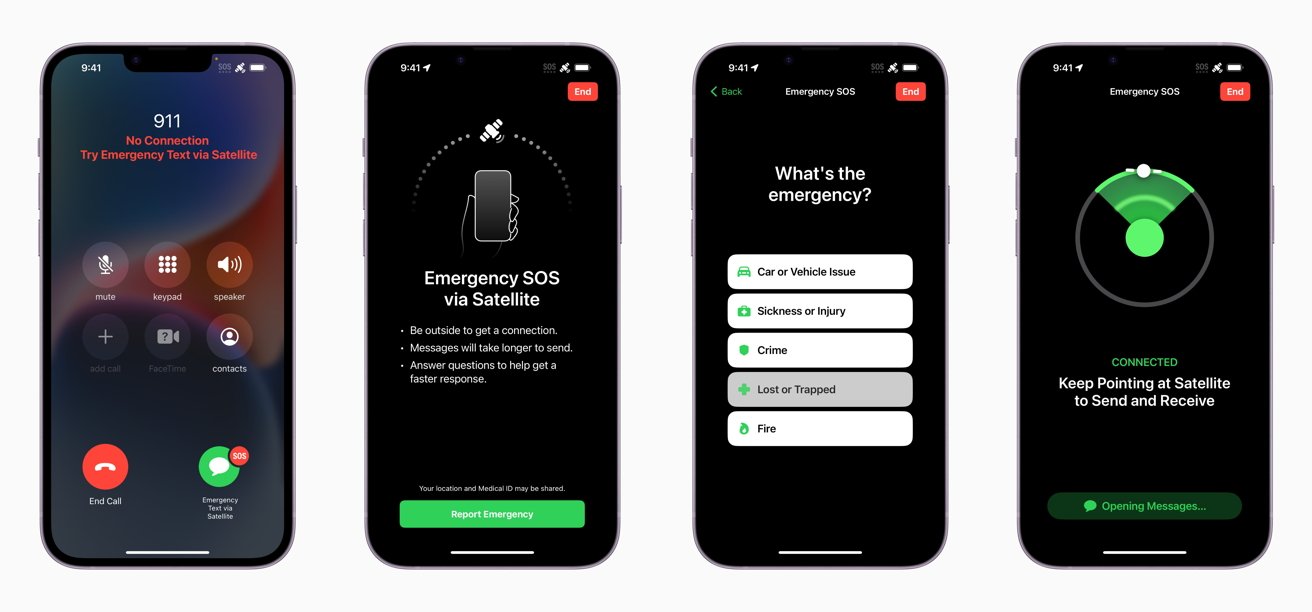While enjoying a trip through Dinosaur National Monument, one hiker found himself the subject of a helicopter search-and-rescue mission after falsely activating his iPhone's Emergency SOS via satellite feature.
During Tuesday's iPhone 15 event, Apple kicked off the event with a heartwarming video about how Apple Products have saved the lives of users across the globe. It touted the benefits of features like active heart rate monitoring, Emergency SOS via satellite, and crash detection.
However, as we've learned before, it's possible for certain health and safety features to be triggered inadvertently. GeekWire co-founder, John Cook, shares a story in which that exact scenario happens.
In June, Cook headed out for his yearly hike in Dinosaur National Monument. This year, he took along his iPhone 14, thinking it'd be a good idea to have a phone with satellite capabilities on hand in case of emergency.
What he didn't expect, however, was to be the subject of an accidental search and rescue mission.
"In the process of turning off the phone (or what I thought was turning off the phone by simultaneously holding the volume and side button), I inadvertently — and to this day I do not know what happened — set off a satellite SOS alert," Cook writes.
"Thinking my phone was turned off, I tossed it into my fanny pack and headed back down the canyon."
As it turns out, Cook had inadvertently sent a satellite SOS to more than a dozen local search and rescue personnel. The report he sent stated that someone had fallen ill or gotten injured.
He hadn't realized his error until a half-hour later, when he spotted a rescue helicopter in his area. Upon checking his phone, he realized that emergency services had contacted him to ask about the nature of the emergency.
After quick thinking by a trail guide, they dismissed the search and rescue team. Still, Cook isn't sure how he sent the alert in the first place.
Seeking answers, Cook contacted the National Park Service to see if this was an ongoing problem. According to Brian Sikes, deputy chief of emergency services at the National Park Service, it hasn't been a major issue.
"Looking over the current data, we have not seen a significant uptick in the iPhone 14 false alarms or unintentional activations, but we've had a couple," Sikes told Cook.
Jason Griswold, chief ranger at Dinosaur National Monument, also noted that there have not been many false alarms. The park has no plans to limit the use of satellite phone technology within its borders.
 Amber Neely
Amber Neely

-m.jpg)







 William Gallagher
William Gallagher
 Sponsored Content
Sponsored Content
 Malcolm Owen
Malcolm Owen













8 Comments
I’ve only done the simulated test, but thought you had to manually track a satellite thru the sky. Guess not?
This sounds a little fishy IMO. He probably purposely activated it to “test” it or what have you, then made up the story about it being an accident when the search teams came for him. It’s not like crash detection, you have several very purposeful steps to do before emergency responders are sent for you.
Charge him or give him a ticket.